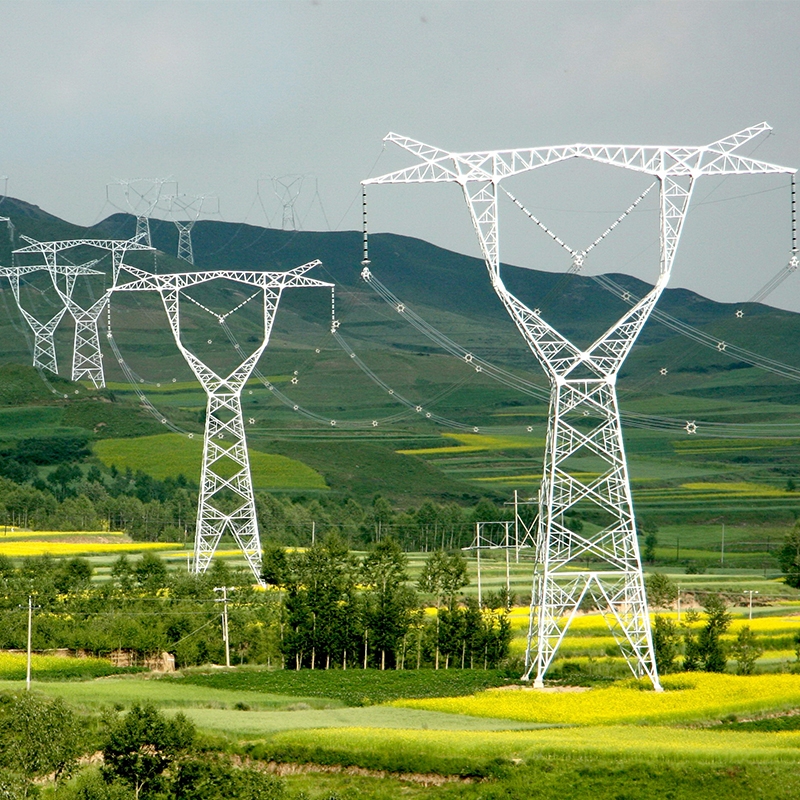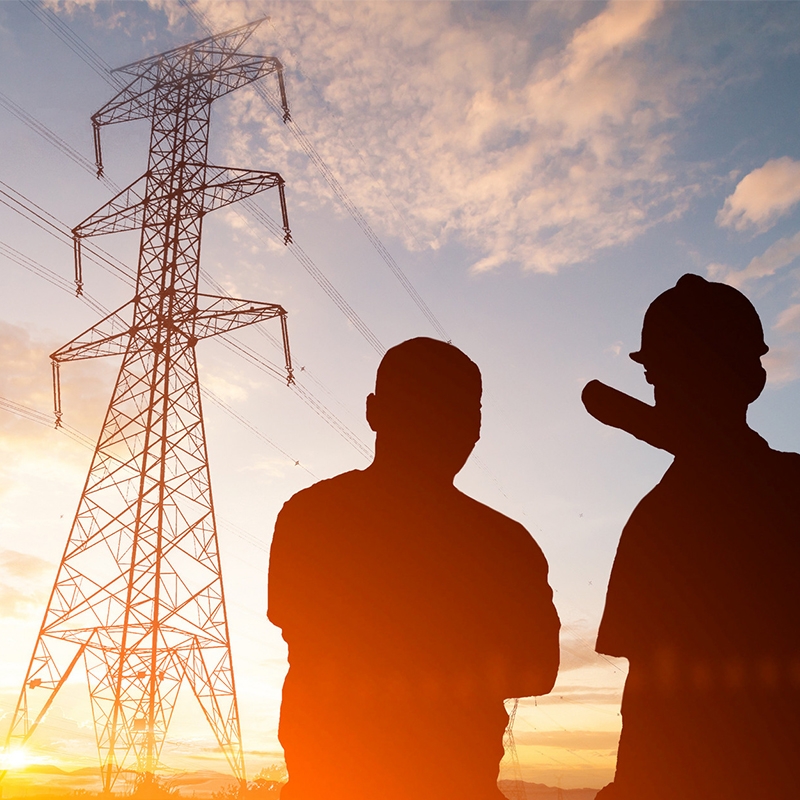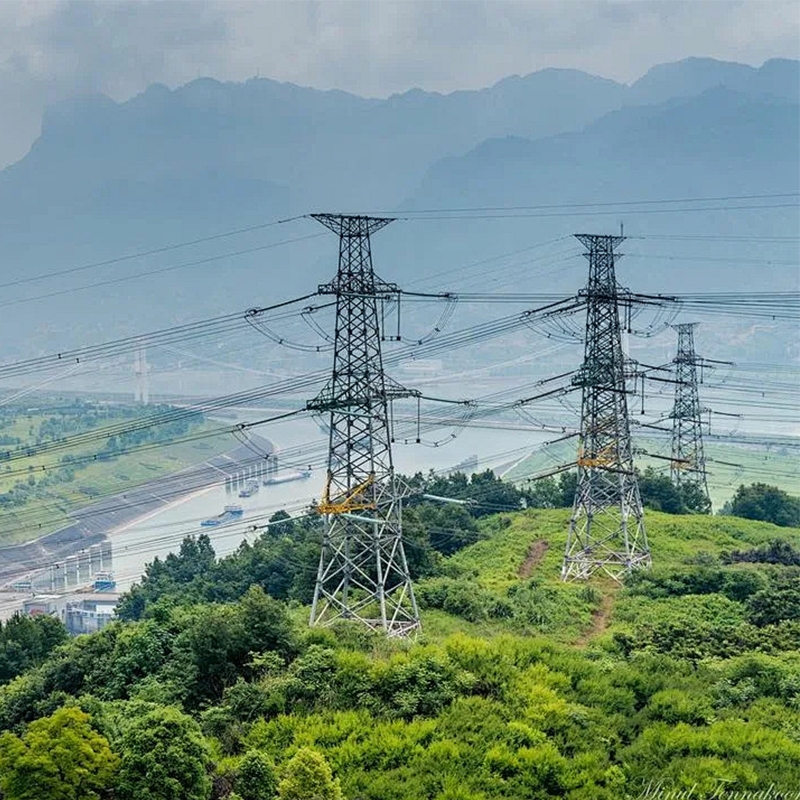Analysis of Several Common Faults of Transformers
A Power Transformer is a static power device that changes the magnitude of alternating voltage. It is one of the core devices in the power system. During the transmission and distribution of electrical energy, the power transformer is the core of energy conversion and transmission, and it is the inevitable path for the energy source of all industries and thousands of households in the national economy.
If a transformer malfunctions, it will affect the safe and stable operation of the power system. As a very important piece of equipment in the power system, once an accident occurs, it will cause significant economic losses. Analyze various power transformer accidents, identify the causes, summarize the solutions to handle the accidents, control the accident losses within the smallest possible range, and minimize the damage to the system as much as possible.
Winding fault
The main ones include inter-turn short circuits, winding grounding, interphase short circuits, broken wires and open welds at joints, etc. The reasons for these malfunctions are as follows:
① During manufacturing or maintenance, local insulation is damaged, leaving defects.
② During operation, due to poor heat dissipation or long-term overload, foreign objects fall into the winding, causing the temperature to be too high and the insulation to age.
③ Poor manufacturing process, insufficient pressing, and mechanical strength that cannot withstand short-circuit impact cause winding deformation and insulation damage.
④ When the winding gets damp, the insulation expands and blocks the oil passage, causing local overheating
⑤ The insulating oil deteriorates due to the mixture of water, or its contact area with air is too large, causing the acid value of the oil to be too high and the insulation level to drop, or the oil level is too low, with some windings exposed to the air and not dealt with in time.
Due to all the above reasons, once insulation breakdown occurs during operation, it will cause a short circuit or ground fault in the winding. The fault phenomenon during inter-turn short circuit causes the transformer to overheat, the oil temperature to rise, the current on the power supply side to increase slightly, the DC resistance of each phase to be unbalanced, and sometimes there are squeaking sounds and bubbling sounds in the oil. A slight inter-turn short circuit can cause the gas protection to act. In severe cases, differential protection or overcurrent protection on the power supply side may also act. Inter-turn short circuits should be dealt with promptly upon discovery, as they often lead to more serious faults such as single-phase grounding or interphase short circuits.
2 Casing failure
The common faults of this kind are blowing up, falling off and oil leakage. The causes are:
Poor sealing, damp insulation, or oil leakage;
② Improper configuration of the respirator or failure to deal with the inhaled moisture in time;
③ On the high-voltage side of the transformer (110kV and above), capacitor bushings are generally used. Due to poor porcelain quality, they may have sand holes or cracks.
④ There are defects in the manufacturing of the capacitor core, and there is free discharge inside.
⑤ The casing is seriously fouled.
3. Core failure
The insulation between the silicon steel sheets is damaged, causing local overheating and melting of the core.
② The insulation of the through bolt that clamps the core is damaged, causing a short circuit between the silicon steel sheet of the core and the through bolt.
③ Residual welding slag forms two-point grounding of the core.
④ The top and middle of the transformer oil tank, between the upper bushing flange of the oil tank, the barrel skin and the bushing. The internal core, winding clamps and other components heat up due to local magnetic leakage, causing insulation damage.
When a transformer malfunctions during operation, if it is determined that the fault lies in the winding or core, the core should be lifted for inspection. First, measure the DC resistance of each phase winding and compare them. If the difference is significant, it indicates a winding fault. Then, conduct an appearance inspection of the core, and measure the insulation resistance between the sheets using the DC voltage and current meter method. If the damage is not significant, just paint the damaged area.
3. Core failure
The insulation between the silicon steel sheets is damaged, causing local overheating and melting of the core.
② The insulation of the through bolt that clamps the core is damaged, causing a short circuit between the silicon steel sheet of the core and the through bolt.
③ Residual welding slag forms two-point grounding of the core.
④ The top and middle of the transformer oil tank, between the upper bushing flange of the oil tank, the barrel skin and the bushing. The internal core, winding clamps and other components heat up due to local magnetic leakage, causing insulation damage.
When a transformer malfunctions during operation, if it is determined that the fault lies in the winding or core, the core should be lifted for inspection. First, measure the DC resistance of each phase winding and compare them. If the difference is significant, it indicates a winding fault. Then, conduct an appearance inspection of the core, and measure the insulation resistance between the sheets using the DC voltage and current meter method. If the damage is not significant, just paint the damaged area.
4. Gas protection failure
Gas protection is the main protection for transformers. Light gas acts on signals, while heavy gas acts on tripping. The following is an analysis of the causes and handling methods of the gas protection action:
The reason for the gas protection action might be that the oil filtration, refueling and cooling systems are not tight, allowing air to enter the transformer.
② The oil level drops slowly due to the decrease in temperature and oil leakage. Or a small amount of gas is produced due to transformer failure;
③ Caused by a through-circuit fault;
④ It is caused by a fault in the secondary circuit of the protective device.
A signal is sent after the light gas protection is activated. The reason is: There is a minor fault inside the transformer; There is air inside the transformer. Secondary circuit faults, etc. The operation personnel should immediately conduct an inspection. If no abnormal phenomena are found, gas sampling and analysis should be carried out. When the gas protection action trips.
There may be serious faults inside the transformer, causing the oil to decompose and release a large amount of gas, or there may be faults in the secondary circuit, etc. If the gas protection tripping occurs, the backup transformer should be put into operation first, and then an external inspection should be carried out. Check whether the welding seams of the oil pillow explosion-proof door are cracked and whether the transformer casing is deformed. Finally, check the flammability of the gas.
5. Handling of Automatic tripping of transformers
When a transformer in operation trips automatically, the operating personnel should promptly take the following measures:
When the circuit breakers on all sides of the transformer trip automatically, operate the control switch of the tripping circuit breaker to the position after the trip, and quickly put the standby transformer into operation. Adjust the operation mode and load distribution to maintain the operation system and its equipment in a normal state.
② Check what kind of protective action the dropped card belongs to and whether the action is correct;
③ Understand whether the system has any faults and the nature of the faults;
④ If any of the following circumstances apply and with the consent of the leader, power may be supplied without inspection and testing: the circuit breaker trips due to human error in touching the protection. Protection: Obvious misoperation tripping; Only the low-voltage overcurrent or time-limited overcurrent protection of the transformer operates. At the same time, the next-level equipment of the tripped transformer fails but its protection does not act, and the fault has been removed. However, the test power supply is only allowed once.
If the main protection actions such as differential, heavy gas or current failure occur and there is an impact phenomenon during the fault, a detailed inspection of the transformer and its system is required, power-off and insulation measurement. It is prohibited to put the transformer into operation before the cause is identified. It must be pointed out that regardless of whether the system has a backup power supply or not, it is absolutely not allowed to force a transformer.
6. Transformer on Fire
Transformer fire is also a dangerous accident. As there are many flammable substances in transformers, if not dealt with in time, an explosion may occur or the fire may spread.
The main cause of the transformer fire is:
① The casing is damaged and flashes off, and the oil flows out under the pressure of the oil pillow and burns on the top cover.
② Internal faults in the transformer cause the casing or radiator to crack, resulting in the burning transformer oil overflowing.
In case of a transformer fire, the following measures should be taken promptly:
Disconnect the circuit breakers on all sides of the transformer, cut off the power supply on all sides, and quickly put the backup transformer into operation to restore power supply.
② Stop the operation of the cooling device;
When the main transformer and the high-rise transformer catch fire, the generator should be disconnected first.
If oil burns on the top cover of the transformer, the lower emergency throttle should be opened to release the oil to an appropriate position. If there is a fire inside the transformer, oil must not be drained to prevent the transformer from exploding.
⑤ Extinguish the fire quickly with the fire extinguishing device. If a dry fire extinguisher or a foam fire extinguisher is used to put out the fire. Notify the fire brigade to put out the fire when necessary. When such an accident occurs, the transformer protection should act to open the circuit breaker. If the circuit breaker does not disconnect due to a fault, it should be immediately disconnected manually to open the disconnector that may lead to the power supply of the transformer.
7. The tap changer is faulty
The common faults are surface melting and burning, interphase contact discharge or discharge at each joint. The main reasons are:
(1) The connecting screws are loose;
(2) Faulty and improper load adjustment devices;
(3) Poor insulation of the tap insulation board;
(4) Insufficient solder at the joint, poor contact, poor manufacturing process, and insufficient spring pressure;
(5) The acid value of the oil is too high, causing corrosion to the contact surface of the tap changer.
Since main transformer accidents are generally not single but multiple and developing, and the potential major failure points are relatively concealed, coupled with the particularity of the nature of the faults. Therefore, in order to ensure the safe and stable operation of transformers and power grids and handle accidents correctly, we should always keep abreast of the following situations:
① System operation mode, load status, load type
② Oil temperature on the upper layer of the transformer, temperature rise and voltage conditions;
③ Weather conditions at the time of the accident;
④ Are there any maintenance or other work around the transformer?
⑤ Whether the operating personnel have any operations;
⑥ Whether the system is operating or not;
⑦ What protective actions, accident phenomena and circumstances, etc. Strengthen the inspection and supervision of transformer operation, carry out regular maintenance work, eliminate equipment defects in a timely manner, conduct regular inspections and preventive tests, and try to avoid transformer accidents to minimize the damage caused by accidents to the power grid and electrical equipment.




